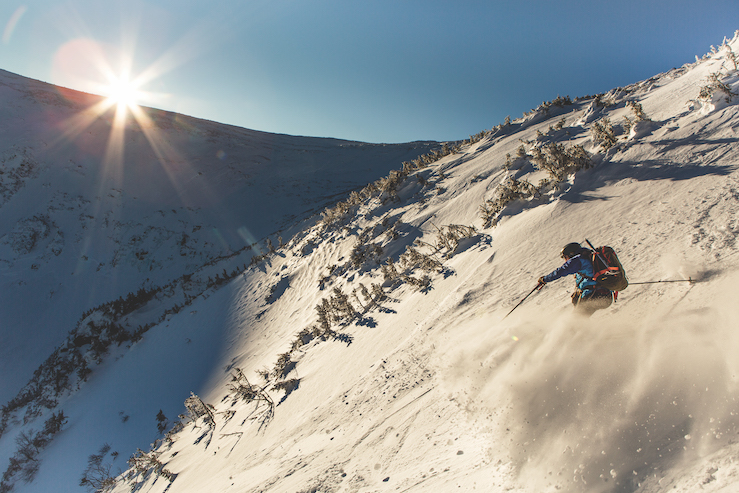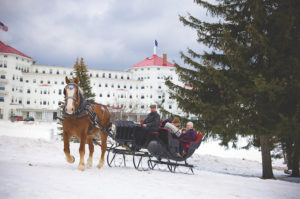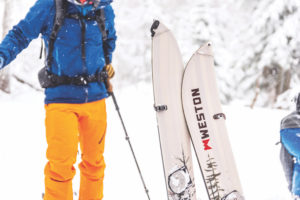
They call it the bible of Northeast backcountry skiing, and that’s kind of how my interpretation of David Goodman’s seminal “Best Backcountry Skiing in the Northeast” has evolved over the years. When I was new to the concept of off-the-grid ski exploration sometime during the early ’90s and was eager to get into some terrain — any terrain — other than Tuckerman Ravine, Goodman’s first book of enlightenment somehow found its way into my moderately reckless hands.
At that time, I wasn’t seeing hordes of people making the exodus from chairlift to trailhead in pursuit of a passion to earn their own turns. The disciples I witnessed dabbling were mostly wearing hiking shoes with skis and boots strapped to and stuffed into their backpacks, expertly wedged around some loose cans of beer. The one or two telemark skiers with skins that I’d come across between Pinkham Notch and Lunch Rocks were a novelty back then.
I was largely ignorant, of course, and Goodman’s work opened the eyes of so many others like me out there to countless possibilities that exist for backcountry ski excursions, not just the tours he has included in his books, but wherever we choose to go out looking for them. His books haven’t singlehandedly ushered in a golden age of backcountry, not by any stretch. But over the course of three decades, his knowledge and insight serve not just as a “how-to” guide for completing a given tour, but a “how-to” roadmap to living the lifestyle.
His books deserve a great deal of credit for the steady rise in interest in backcountry skiing, especially during a period of time he calls the “extended dormancy.” In biblical terms, the heyday of backcountry skiing began in about 10 B.C., before chairlifts, but has been mostly dormant during the reign of the resorts.




